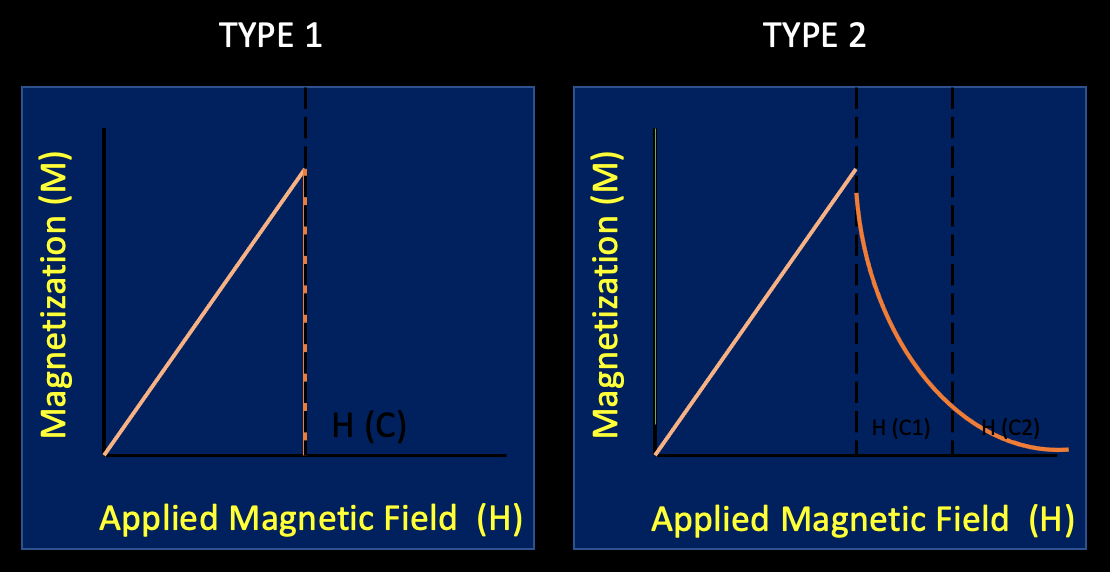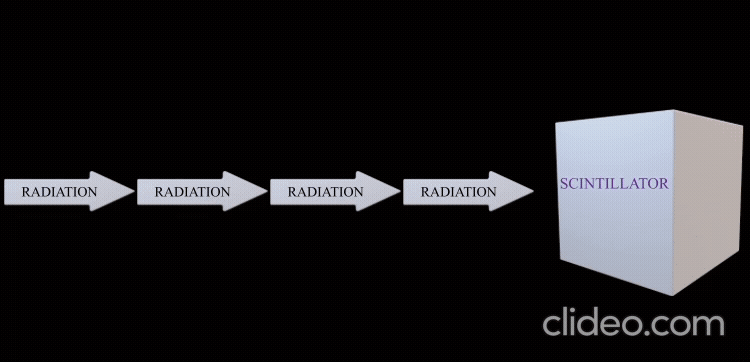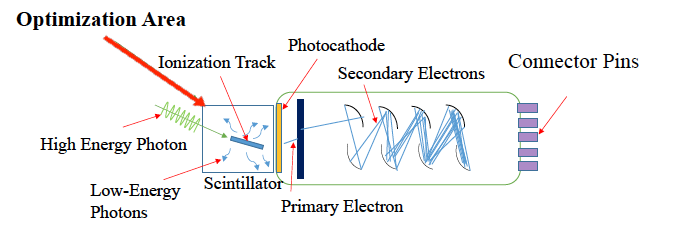Superconducters
Continued by Ian C. Hamlett (Fall 2023), previous authors are listed below:
Amethyst Massaquoi, Ian Sabastian, Savannah Lee
What are Superconducters
Superconductors are materials that can conduct electricity (or current) with little potential energy loss of electric current due to their magnified electric resistance. Superconductivity is a unique phenomenon based on the chemical structure and properties of a given material. Superconductors have many other practical applications such as radiation detection, particle acceleration, and levitation. Superconductors are becoming a popular point of research as the physics and mechanics behind superconductors is important for radiation detection and optimization of scintillators.
Introduction to Resistance
Electric resistance is a property of all metals and conductors except superconductors. As an example, electric resistance is the reason your devices get hot after long periods of use, and the reason why they wear out this is caused by resistance of the wire that the current is trying to pass through. In broad terms, resistance measures how difficult it is for electrons to pass through the wire. In a sense, resistance saps out energy from what would otherwise be a perfect system.
It's easy to think about electric resistance in the same way as you would water flowing through a pipe and the obstacles it might meet. We know that a larger wire will produce a larger flow of current in the same way that a larger pipe would allow water to pass through more quickly than water through a smaller pipe but, it is not as easy to get rid of electrical resistance as it sounds. In a conductor and current situation, electrons flow between metal ions to their endpoint. How well they "hold on" to these electrons is a measure of their resistance. Depending on the material that this is made up off, the metal ions will hold onto the electrons differently and cause them to flow through at a different rate. It is observed in nature that electrons get distracted on the way to the end of the wire and lose energy, but, in a superconductor, this loss of potential eliminated and the electrons are able to march from start to finish without losing any energy. In a lab setting, this process is maintained around temperatures of absolute zero.
Resistance and Quasiparticles
To understand Quasiparticles, it is best to take a look at an assembly of Silicon atoms. Silicon has 4 valence electrons in its outermost shell and thus needs 4 more to become stable. Thus we can bond this silicon atom with 4 more silicon atoms. It is possible to create a lattice of pure silicon which is stable. This would mean our electrons are locked in place. Let's assume an electron from this lattice is knocked free by a photon of enough discrete energy. There would then be a whole where that electron was, allowing for electrons to move resulting in the whole moving throughout the lattice. This moving whole would be referred to as a Quasi-electron.
However, there is a case in which the atoms in a material lattice vibrate. Imagine a soundwave pushing through an object, causing the atoms to oscillate. These oscillations are also Quasiparticles referred to as Phonons, and behave similarly to photons as they both travel at the speed of the force they materialize (i.e. Photons travel at the speed of light, via electromagnetic force). Another way of viewing phonons is as heat because the random motions of atoms in a particle which demark "heat", are also just randomized oscillations of atoms through a particle.
Photo credit: https://www2.physics.ox.ac.uk/sites/default/files/page/2020/07/13/karenonowskauniq2-2020-47125.pdf
Metals create lattices similar to our silicon lattice in which they act as conductors through the fact they do not use up all of their valence electrons in bonding, leaving electrons that can flow freely. However, the phonons of heat traveling through the lattice add up to the random jiggling of atoms which prevents freely moving electrons from attaining a smooth and streamlined flow. This is what is known as resistance. However, the goal is not to reduce phonons to completely out of the picture. Rather, it is possible for the phonons of heat to act as carriers of a quasi-force which can bind electrons together. In incredibly cold conditions, the phonons induced by the attraction of nuclei to an electron moving through the lattice can be a dominant vibrational mode of the lattice. Thus, a stream of electrons in a given direction will produce a resonance in the vibrational modes of the lattice effectively binding the electrons to each other. The bounding of two electrons to each other in this manner is another quasi-particle called a cooper-pair. The cooper-pairs can all occupy the lowest energy state as they do not have enough energy to excite new phonons, thus they do not. This mechanism allows them to stream through the lattice with zero resistance.
About Superconductors
When you lower the temperature of a metal, its resistance will decrease. You could demonstrate this by taking a basic circuit and freezing it- because of ohm's law, the bulb would start to glow brighter since there is a lot more current flowing through until it heated up and the effect was nullified. (V=IR, lowering R will raise I which will raise brightness). For most materials, taking them to absolute zero (or really close) will cause the resistance to decrease to almost zero, or at least improve from where it was, but not quite zero. However, some materials, superconductors, lose all resistance to current. The difference between "almost zero" and "actually zero" is enough to give rise to some cool properties of superconductors. What is happening on the molecular level is that the atoms are not vibrating quickly enough to be attracted to electrons any more, and attractions are minimized to the point where the electrons can flow through with no resistance.
Imagine running through a tunnel where everyone wants to high-five you. You are the electron and the people trying to high-five you are atoms in the wire. If it's too cold, nobody will want to high-five you and you will run faster.
Superconductors can only maintain superconductivity within a certain range beneath their critical range. In the case of electric superconductors, this range is determined by temperature and critical. In the case of magnetic superconductors, this range is determined by a surrounding magnetic field. If it is warmer than a specified value or depending on the range of a magnetic field, superconductors behave with increased or decreased potential.
Critical Temperature- often labeled as Tc, or critical temperature Is the temperature at which the superconductor needs to be beneath in order for it to exhibit "superconductive" behaviors. The usefulness or potential of a superconductors are dependent on the material properties and chemical makeup and their critical ranges
To see a table of these, click here.
Critical Magnetic Field- often labeled as Hc. A superconductor won't exhibit any of its properties if a magnetic field is greater than a certain value or range determined by the critical magnetic field.
Meisner effect- A principle that is unique to superconductors, this is the ability to cancel out all external magnetic fields on the inside of the superconductor below the critical magnetic field. A superconductor can create small currents on its surface below a critical magnetic field to eliminate an external electric field and make its net electric field zero.
You could never be asked to do a hall effect problem with a superconductor!
Types of Superconductors
There are two main types of superconductors, Type I and Type II. Their classification is based on how they break down once their critical magnetic field is reached. Under the critical magnetic field and critical temperature, they all behave similarly.
Type I superconductors describe the increase in magnetization in response to magnetic flux. This increase in magnetization is linear until a critical field is reached. At this point, the magnetization level of a superconductor immediately returns to zero and the properties of said conductor will maintain the magnetization of a normal conductor.
Type II superconductors also exhibit a linear increase in magnetization in response to magnetic flux until a critical point is reached. However, Type 2 conductors have two critical points and the decrease in magnetization is instead a gradual decrease until magnetization is returned to that of a normal conductor. The first point is reached once the superconductor reaches a Vortex State. Vortex State superconductors exist as the vortices of electrons at its surface sink inwards creating thread-like streaks in which magnetic fields are able to permeate through the material. This causes the material to be stuck in one fixed orientation while maintaining remained in levitation.
 Types of Superconductors by Amethyst Massaquoi
Types of Superconductors by Amethyst Massaquoi
Known Super Conductors
There are hundreds of materials that are known to become superconducting at low temperatures. Most known superconductors are alloys or compounds. However, Twenty-seven are chemical elements typically found in their usual crystallographic forms at low temperatures and low atmospheric pressure, all of which are metals. The most common of these include lead, tin, aluminum, and mercury. Less commonly used are metals such as lanthanum, rhenium, and protactinium.
Eleven chemical elements become superconducting at low temperatures and high pressures Among these are silicon, cerium, selenium, and uranium.
Six elements, including bismuth, become superconducting in a highly disordered form which are stable at extremely low temperatures. However, none of the magnetic elements such as chromium, manganese, iron, cobalt, or nickel can exhibit superconductivity.
It is possible for a superconductive compound to be comprised of non-superconductive constituents. Two such examples are disilver fluoride (Ag2F) and a compound of potassium and carbon (C8K).
History of Superconductors
1911: Superconductors were first discovered by Heike Kamerlingh Onnes, a Dutch Physicist. He experimented with mercury, a type 1 superconductor, cooling it to below 4.2 kelvin. This is about the temperature of deep space. All of the resistance in the mercury had vanished establishing the first occurrence of a superconductor. Onnes would also discover superfluidity while cooling helium on the way to making it a superconductor.
1933: Robert Ochsenfeld and Walther Meissner first discovered superconductors can float above magnets. This would be called the Meissner-Ochsenfeld Effect.
1935: Type II superconductors were first discovered by Leb Shubnikov.
1950: Lev Lendau and Vitaly Ginzburg were the first to theorize about why type II superconductors existed. Their equation establishes the Ginzburg-Landau paramter, κ = λ/ξ, which describes type I and II superconductors. If 0 < k < 1/√2, the material is considered a type I superconductor. If k > 1/√2, the material is a type II superconductor.
1957: The basic theory of superconductivity, known as BCS theory of superconductivity, was published by John Bardeen, Leon Cooper, and John Schrieffer. They would later go on to win a Nobel Prize for this discovery.
1986: Karl Muller and Johannes Bednorz realized that superconductors didn't have to be at absolute zero, and found a way to create one that operated at 40 degrees kelvin.
2015: We achieved the greatest record of superconductor temperature at 203 degrees kelvin, but under high pressure. We've been using pressure to cheat the temperature requirements for a while. This was the work of A. P. Drozdov, M. I. Eremets, I. A. Troyan, V. Ksenofontov, and S. I. Shylin.
2023: A team led by Lee Sukbae at Korea University identified a grey-black, polycrystalline compound known as LK-99. Being a copper-doped lead-oxyapatite, much controversy surrounds the material as to whether it is superconducting. Regardless of its status, it has further enhanced the search for room-temperature superconductors.
Applications of Superconductors
Large Hadron Supercollider- The Large Hadron Supercollider runs between France and Switzerland, and is used to experiment with fundamental particles It uses superconductors to accelerate particles to super high speeds so that they can be observed. For more information about the LHC, click here.
Photo curtesy of http://www.forbes.com/sites/bridaineparnell/2015/03/25/short-circuit-stalls-large-hadron-colliders-restart/
Futuristic Technology like Hover boards- through a phenomenon called Quantum Levitation, superconductors can be used to create things that levitate- the superconductor will float easily above a magnet. This could be potentially used for all sorts of levitation devices like cars, hoverboards, or stuff we can't even imagine yet. To read more about Quantum Levitation, click here.
Photo courtesy of http://www.blastr.com/2015-5-22/watch-guy-break-world-record-longest-hoverboard-flight-ever
Cool cell phones- current never disappears in a superconducting loop of metal, so technology with superconducting metal would never run out of power, but continue to be charged forever. This could cut down on electricity usage worldwide, allowing for some serious energy savings.
medicine- superconductors have used in MRI machines and NMR machines, both of which can be used in modern medicine to help diagnose various medical conditions. Superconducting magnets are used to form a strong magnetic field around the person, switching on and off to create the thumping sound of the machine. The machines do require lots of liquid helium to keep temperatures well below the Tc for a given metal in use.
Other Applications
Radiation detection, Power generation, mine hunting, Electromagnetic Radiation radar,
Scintillators
Scintillators are a type of superconductor with the capacity to turn waves of radiation into photons of visible light. Scintillators can be found in nature or produced in labs as transparent crystals. The most common form of scintillator produced by mechanical involvement is constructed with the use of Thallium-doped Sodium Iodide. Thallium-doped Sodium Iodide glows, or visible emits light when exposed to gamma radiation.
The most common use of inorganic scintillators is for detecting radiation in medical diagnostics.
Inorganic scintillators are found in spectrometers which are used for analyzing geophysical changes after large amounts of radiation is released into populated environments or in environments that maintain higher levels of gamma radiation exposure.
 Scintillator gif. by Amethyst Massaquoi
Scintillator gif. by Amethyst Massaquoi
Super Conductor Optimization Research: Inorganic Scintillators
Scintillators can be found in nature or manufactured and can be enhanced through the use of photocathodes. A significant portion of light emitted from an inorganic scintillator is lost due to total internal reflection that is a result of the large difference in refractive index between the scintillator and the photocathode.
Research and optimization of inorganic scintillators are done by enhancing the ability of a photocathode to collect light particles using photonic crystal structures. This can be done by coating scintillators with materials that maintain a high refractive index.
 Photocathode with Inorganic Scintillator by Amethyst Massaquoi
Photocathode with Inorganic Scintillator by Amethyst Massaquoi
Further Reading
Futuristic Technology and Superconductors
List of corresponding Superconductors and their Tc and Hc constants
Why this matters to me (Samantha Lee)
I'm a chemical engineer and love the idea of coming up with solutions that will help out our future when it comes to life on earth. Superconductors could be the solutions to lots of problems having to deal with energy, which really excites me. I also love chemistry and know a lot about superconductors from a chemistry perspective, but wanted to add some physics knowledge to my collection.
Why this matters to me (Amethyst Massaquoi)
I'm in NROTC and I plan on becoming a submariner after graduation. In partnership with the U.S Navy and the Defense Threat Detection Agency, I interned at PENN State's Applied Research Lab in the Summer of 2022 and worked to enhance inorganic scintillators over a ten-week period. I had a great experience and gained a solid understanding of the importance of radiation detection for military applications, so I thought my limited background in superconductor technology would be a nice addition to this page.

